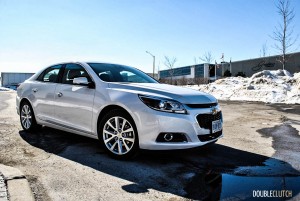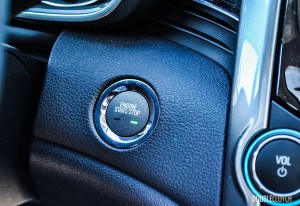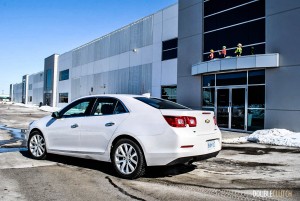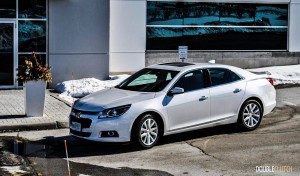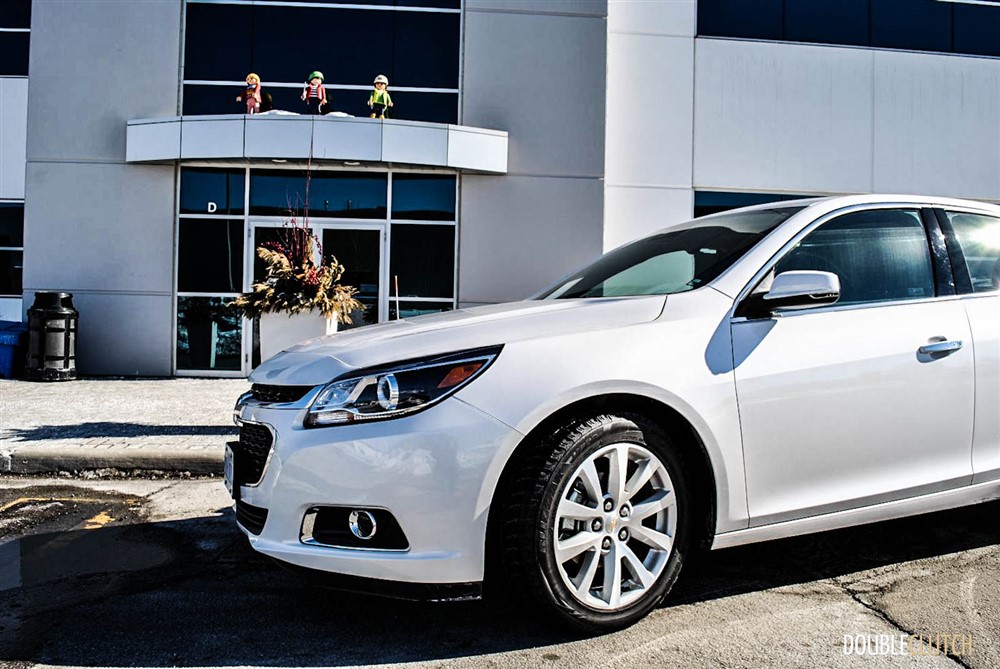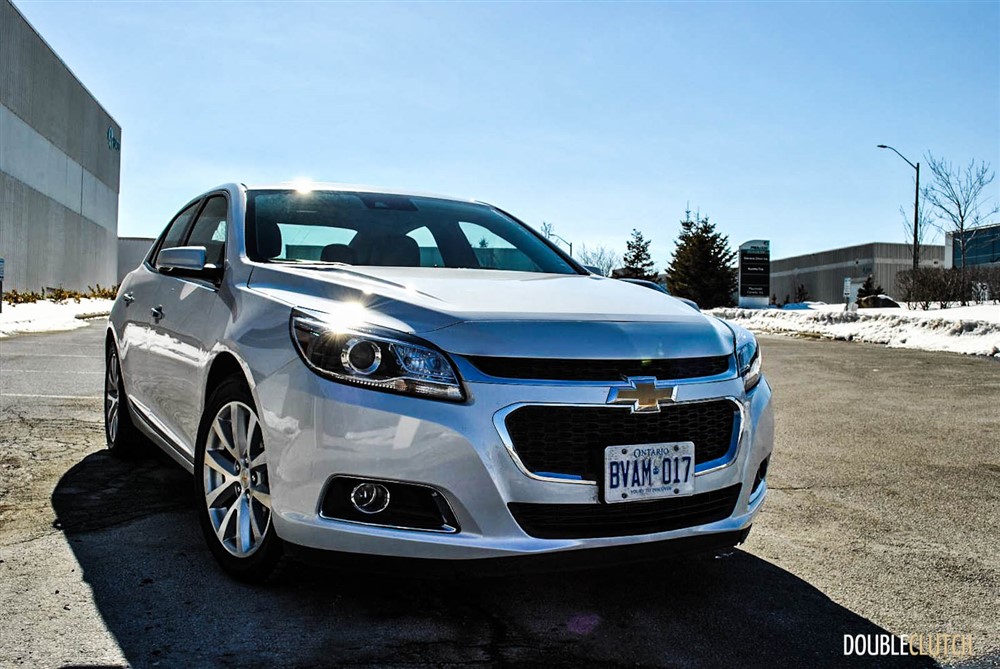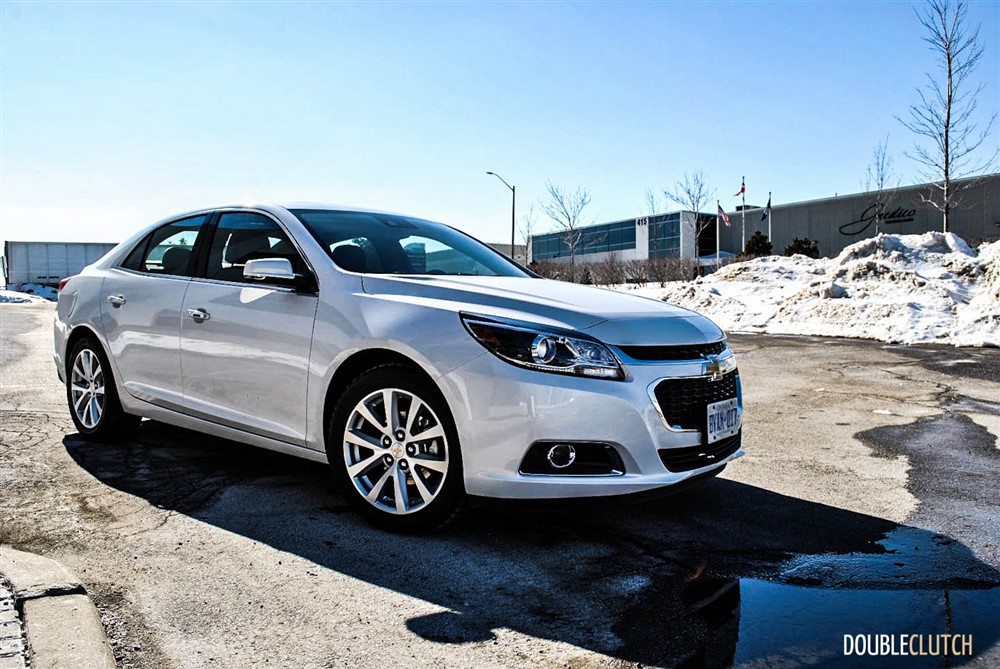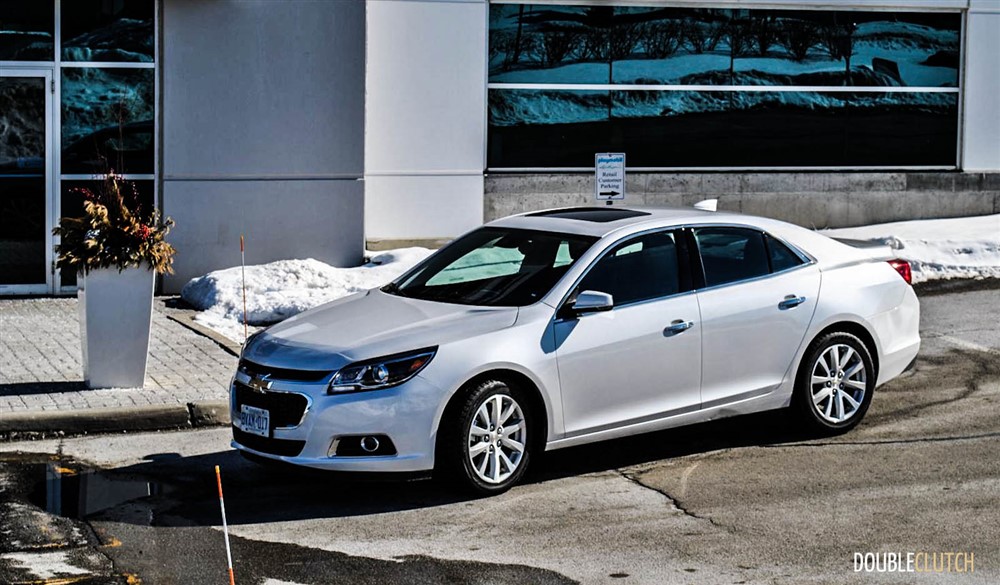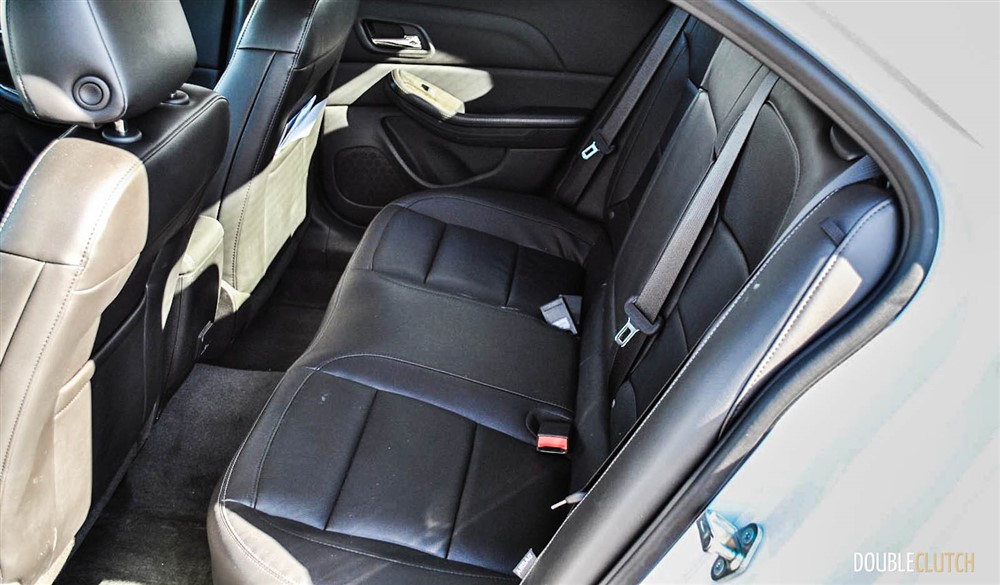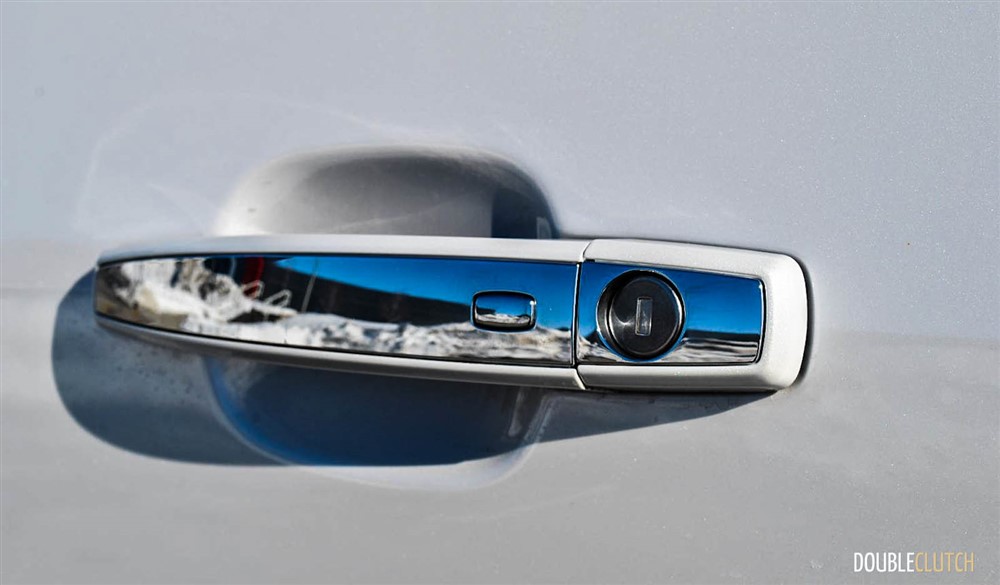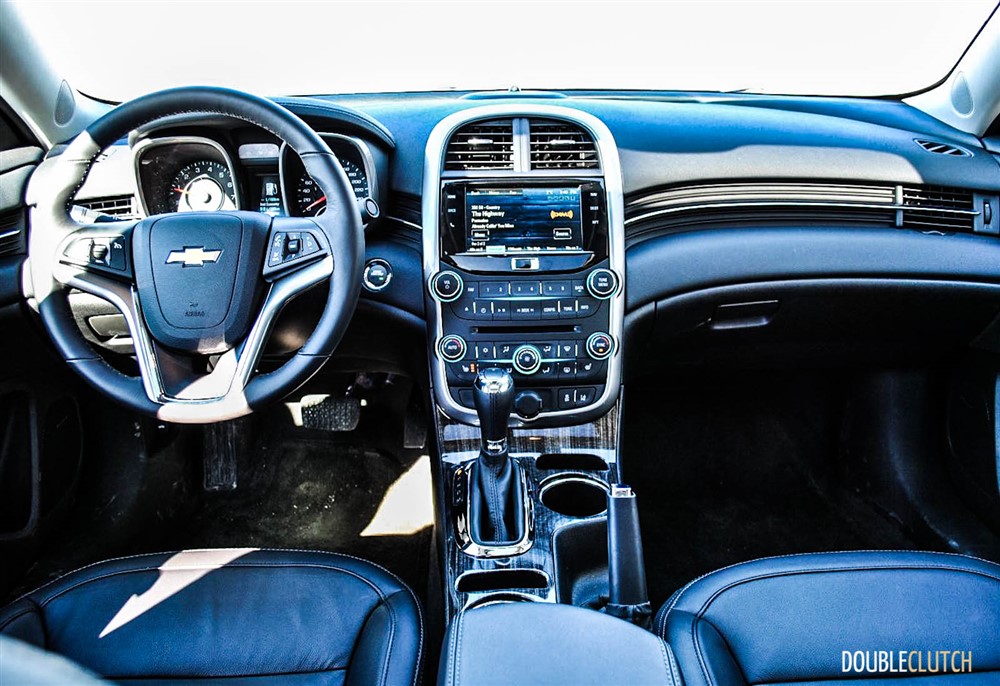Since GM’s revival of the Malibu nameplate in the late 1990s, the modest mid-sizer is something I’ve always met with mixed emotions. I’ve driven my fair share of Malibus over the years, but the car has never managed to leave a lasting impression on me. The Malibu has been a very forgettable car, and I am sure I am not the only one to simply forget about it. Honestly though, it has been a few years since I’ve been behind the wheel of one, which begs a question- has GM morphed the Malibu into a great midsized sedan and I just haven’t noticed? GM sent me a nicely equipped 2015 Chevrolet Malibu LTZ for a week to find out.
As consumers, we tend to ask a lot from a midsized sedan. Despite the growing popularity of crossovers and such, the sedan still remains the family vehicle of choice for many shoppers. Unlike a minivan, pickup or sports car that can be designed with a pretty clear purpose in mind, a sedan can end up serving many different automotive roles. Whether it’s the family hauler, commuter, a traveling salesperson’s mobile office, or a rental fleet staple, a car like the Malibu needs to be able to wear many hats. In my mind, that makes designing a good midsizer much trickier, as you’re always trying to address an immensely broad set of needs.
With that in mind, the designers at GM have taken a very conservative approach to exterior styling. While it appears distinctly Chevy from both front and rear, the Malibu’s side profile could easily be mistaken for any other mid-sizer made within the last decade or so. Personally, I would like to see Chevy take a more aggressive approach; it worked great for the elegant new Impala and even the king of beige-mobiles, the Toyota Camry is looking more and more aggressive these days. That said, Chevrolet has added a handful of nice touches to the exterior of the Malibu.
Firstly, the back end looks great in my opinion; it’s slightly squared off taillights, dual exhaust and wide rear stance give it a bit of an edgy style reminiscent of the 2010-2013 Camaro. Secondly, Chevy has clearly been working on the overall exterior fit and finish, as all the little details such as the panel gaps and paint finish on my Iridescent Pearl White Tricoat tester are impressive. One exterior feature to note is the fact that each door handle has a button to unlock the doors as long as you have the proximity key on you. Many cars only have this button on the driver’s door, which is often not the first door I go for when I am approaching my vehicle.
The interior continues to impress with finishings and fitment much better than any previous iteration of the Malibu. I easily found a very comfortable driving position when I sat down in the soft heated leather seats, and despite my tester being loaded up with all the latest tech features, I immediately found the controls I was looking for. The centre stack is laid out similar to the one in the Buick Verano I recently drove, but the devil is in the details. Although I struggled with the Buick’s controls, everything in the Malibu is intuitive. Integration between the buttons in the centre stack and the MyLink infotainment screen is much better than in the Verano, and I was easily able to set up the dual-zone climate control. I am usually a fan of GM gauge clusters and the Malibu is no exception. It’s logically laid out, pleasant to look at and the LCD readout is easy to operate. From a space standpoint the Malibu definitely feels roomier than its dimensions would have you believe. At 5’11, I had no problem getting into the back seat, and up front I found plenty of smart storage for my day-to-day carry items.
While the interior is a worthy improvement over the previous generation Malibu, there are still some areas of obvious cost cutting. For instance, the faux-wood trim on the centre console looks and feels out of place since it’s the only piece of wood trim in the car. Additionally, the use of hard plastics on some high-touch areas such as the centre console and tops of the door panels distract from an otherwise very nice interior.
With an MSRP of $34,990, my tester came equipped with just about every option in the book, including the pearl paint ($995) and the touch screen navigation system ($795). Standard on the LTZ is a Pioneer 9-speaker sound system, 4G LTE Hotspot connectivity, rear view camera, moonroof and HID headlamps, along with blind spot, forward collision and lane departure warning systems. I did miss having a heated steering wheel given the extreme cold in Toronto, but the well-integrated remote start function helped to make up for the shortfall. Also, the heated wheel isn’t really available in too many offerings in this segment.
What’s not standard on the LTZ is the optional turbocharged 4-cylinder engine. Instead, my tester is equipped with the base 2.5L 4-cylinder delivering a solid 196 horsepower.. The 2.5L is mated to a traditional 6-speed automatic, which I am glad GM has stuck with instead of resigning themselves to the CVT. The 6-speed has been well-refined over the years and it’s very quick to respond, which really helps to minimize the impact of the 2.5L’s output. Speaking of which, the 2.5L certainly doesn’t make the Malibu the most exciting midsize sedan to drive, but it’s been very well-tuned for fuel savings. Additionally, the Malibu’s four puts out more horsepower than notable comparables like the Toyota Camry, Mazda6, and Honda Accord.
Most notable is the fact that my LTZ was the “Eco” model. This includes a stop/start feature built into the engine that automatically shuts it off when the car is at a light or in traffic. When the brake is released, the engine restarts almost seamlessly. It’s smooth enough that if you’re not paying attention, you can almost miss it. Although this is a neat feature in an affordable sedan, I am not sure it saved me much fuel during my test week. Due to the extreme cold temperatures and high electrical draw I was putting on the car by running items such as heated seats, the stop-start function was not active for much of my driving. The system only works when the car is running in “low stress” conditions. That aside, the 2.5L did prove its efficiency by delivering 9.2L/100km during my week of cold weather commuting, and on a longer highway run I saw an average as low as 6.5L/100km.
As the economy numbers suggest, the Malibu really shines on the highway. It is quiet, peaceful and under control when cruising along at freeway speeds, all the while sipping on fuel. It is soft, comfortable and safe in the city, but the 2.5L motor is a little sluggish off the line and the Malibu isn’t exactly inspiring through the corners.
The Malibu is up against some very serious competition in the midsize segment, and after spending a week with it, it’s what I’d call a decent competitor. It does everything you could ask of it reasonably well. It’s roomy enough for the kids, efficient enough for the daily commute and luxurious enough for the client meeting or date night. The problem that remains is that even as a bit of a GM buff myself, I am hard pressed to find a strong reason why I would choose the Malibu over something like an Accord, Camry or even a Kia Optima at comparable prices. As GM teases silhouettes of the redesigned 2016 Malibu, that is the challenge I’m sure they will easily be able to overcome.
2015 Chevrolet Malibu LTZ Gallery
See Also:

